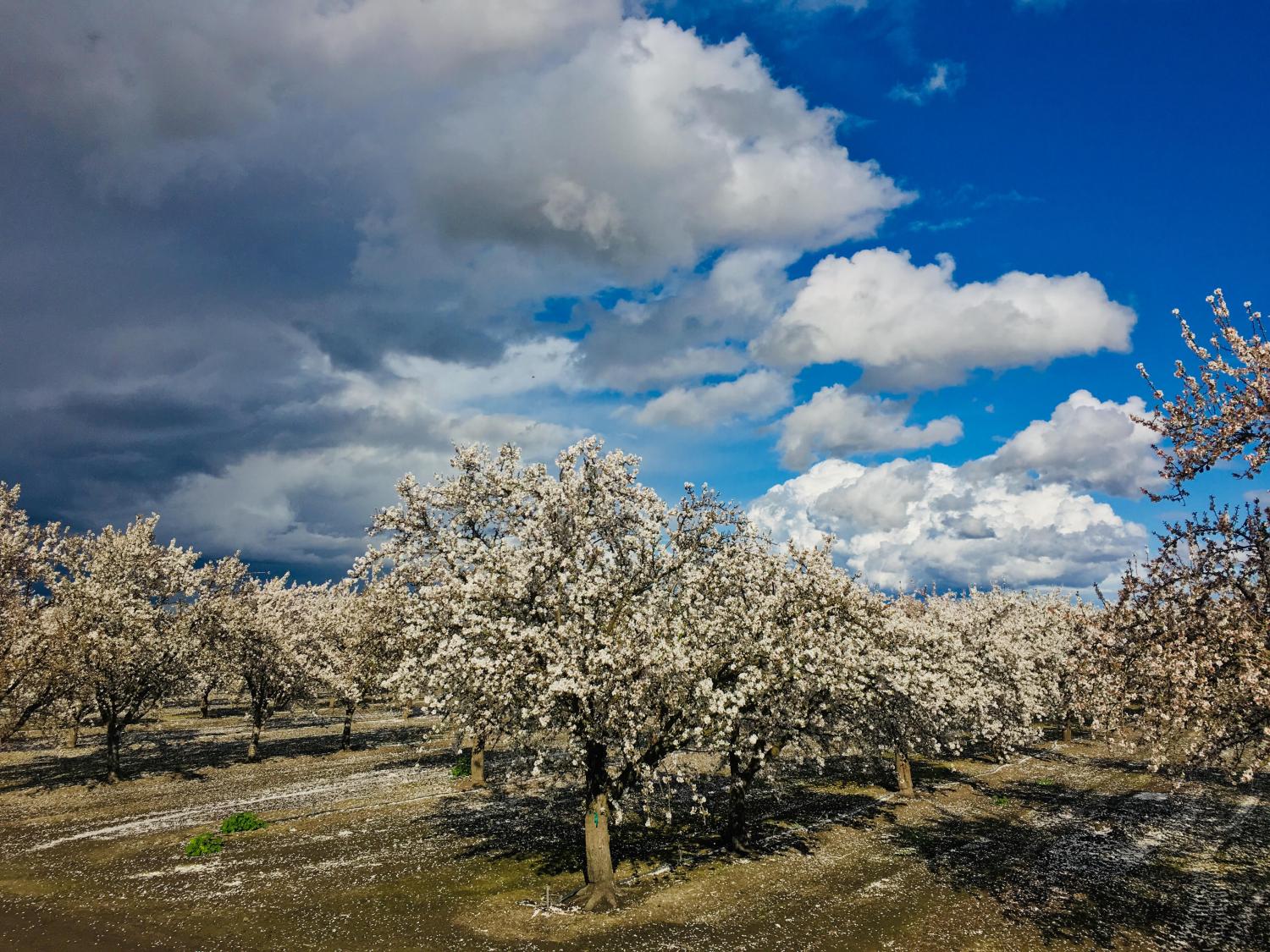
A startup working with IBM believes it could harness blockchain technology in order to save California's breadbasket, the San Joaquin Valley, from sinking.
Blockchain has been touted as the solution for countless business problems. Some ideas we’ve seen here at 3p are valid. Others are, well, borderline bananas. Now one company in particular says its blockchain technology could save California’s breadbasket, the Central Valley, from sinking.
The Central Valley—dismissed by many as hot and dusty and littered with billboards and cheap hotel signs flanking chocking highways—also brims with diversity, offers boundless outdoor opportunities and, if you’re a mid-century architecture fanatic, is home to many a gem. And yes, it does get hot; the wide discrepancy between summer scorching highs and breezy nighttime lows is in part why this fertile bowl between the Sierra Nevada Mountains and the Coastal Ranges grows about a quarter of food in the U.S. And these are high-value, tasty and healthful foods: almonds, pistachios, stone fruit, pomegranates and citrus are among the crops that contribute to an annual $17 billion industry. Cattle, for both beef and dairy, also roam, and reign, in pastureland visible from both Interstate 5 and California Highway 99.
The region, which stretches from Redding in the north to Bakersfield in the south, with rapidly growing cities like Sacramento, Modesto, Fresno and Visalia anchoring the middle of the valley, also has its struggles with air and water quality. And while precipitation in 2017 and this year led to the Golden State finally being declared drought-free, the San Joaquin Valley (the southern half of the Central Valley) in particular will have to cope with several massive water-related problems.
Among them, the San Joaquin Valley is sinking. The state’s over-complicated water allocation system for farmers is part of the problem. But years of drought also pushed farmers to invest in the harvesting of groundwater. If you were smart enough to launch a well-drilling business this century, most likely you’ve done quite well financially. But as a result, the region’s aquifers are becoming depleted, causing many areas to sink a few inches a year. According to a profile in Wired, one corner of farmland has sunk two feet in nine years.
The results include gaping cracks in roads, slumped power lines and damaged canals. Eventually, the area could witness a plunge in real estate values if the amount of water available can’t support agriculture. And if these valuable aquifers can’t be replenished because of them collapsing to a point at which they are no longer able to store groundwater, future droughts could devastate this region environmentally and economically.
What’s the solution? The real pipeline that is needed, one built from the East Coast to West delivering water, isn’t on anyone’s radar at the moment.
Technology, however, could help prevent future chaos.
The World Economic Forum, for example, is touting satellite sensing technology that could measure silt, sand and clay layers, which could help engineers locate potential trouble spots. An improved water allocation system, one that would work akin to a cap-and-trade system for air-polluting industries, is also worth exploring.
Then there is a technological solution. Business journalist Gregory Barber has suggested blockchain technology could help maintain and, eventually, improve the valley’s aquifers. That idea would need some convincing. As with any region, the valley’s farmers and ranchers are notoriously suspicious of government, outsiders’ interference, technology and, in the case of raisin growers, even of each other.
But California’s water challenge also presents an opening for next-generation technology. In 2014, California passed a law designed to restore the valley’s aquifersathe problem is that implementation is left up to local authorities, which means the chances of this legislation working lie somewhere between probably not . . . to never. Furthermore, how could local water districts and farmers track all these water flows?
To that end, a startup, SweetSense, is working with IBM to harness blockchain technology. As profiled by Barber, the company’s sensors could measure water, track where it flows and then share that data with local stakeholders.
Blockchain solutions often sound fantastic in theory but face a steep climb in practice. But if there is one region where blockchain could thrive, it’s in the San Joaquin Valley. True, the one commodity in short supply in this area is trust. A robust blockchain water monitoring system could replenish that trust—and ensure fair and reliable sources of water as well.
Image credit of almond blossoms in western Fresno County: Leon Kaye

Leon Kaye has written for 3p since 2010 and become executive editor in 2018. His previous work includes writing for the Guardian as well as other online and print publications. In addition, he's worked in sales executive roles within technology and financial research companies, as well as for a public relations firm, for which he consulted with one of the globe’s leading sustainability initiatives. Currently living in Central California, he’s traveled to 70-plus countries and has lived and worked in South Korea, the United Arab Emirates and Uruguay.
Leon’s an alum of Fresno State, the University of Maryland, Baltimore County and the University of Southern California's Marshall Business School. He enjoys traveling abroad as well as exploring California’s Central Coast and the Sierra Nevadas.














